
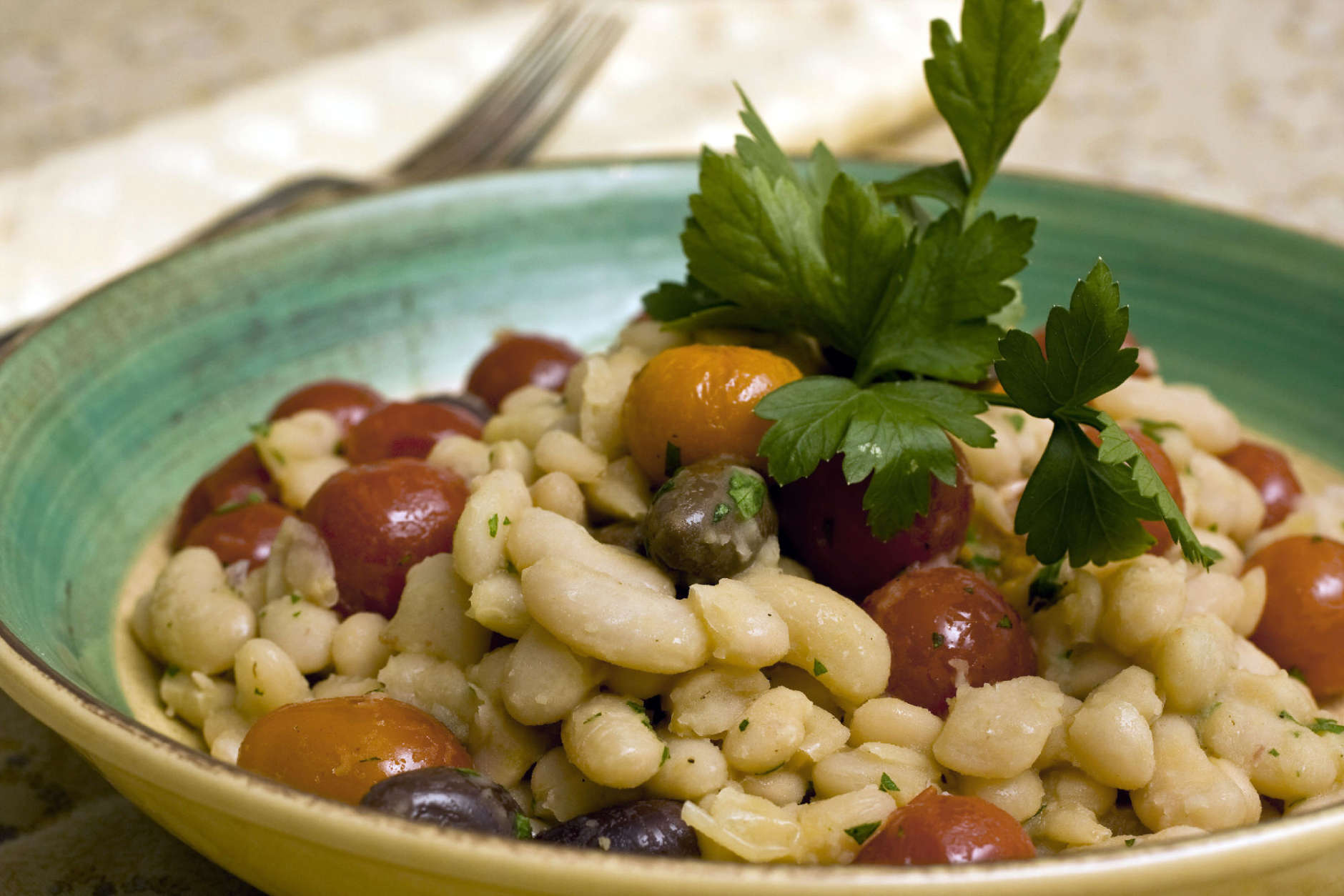
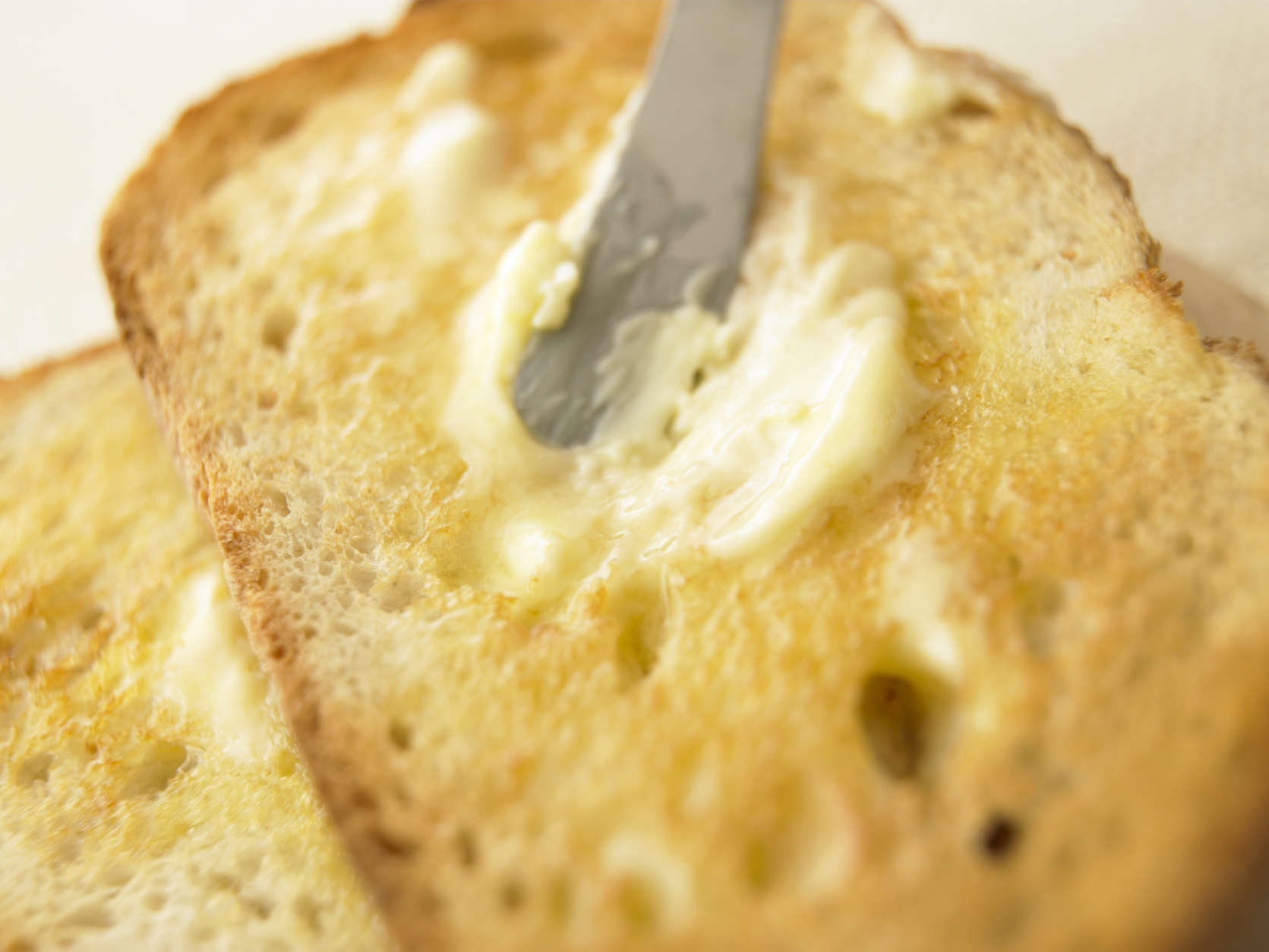
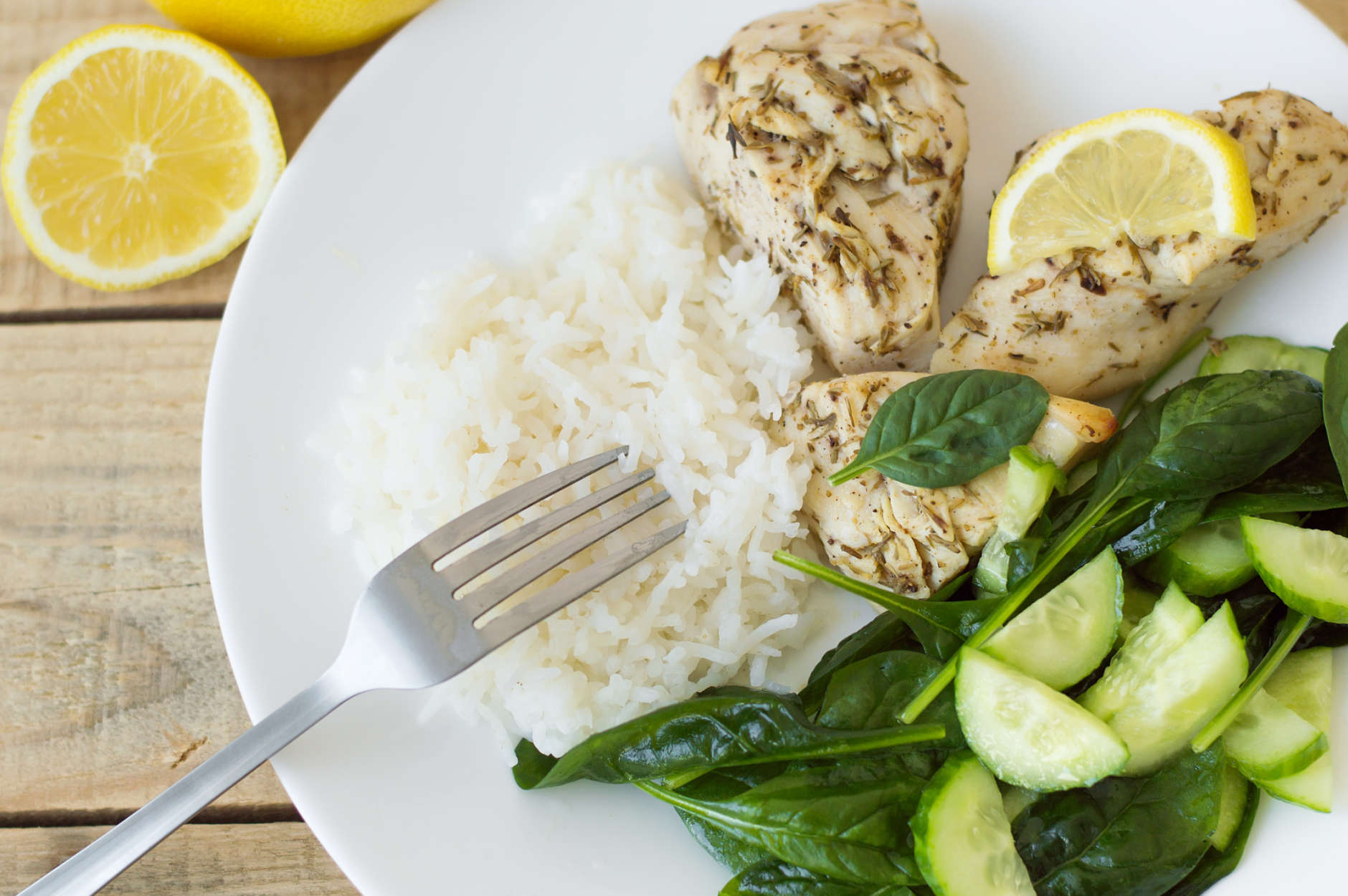
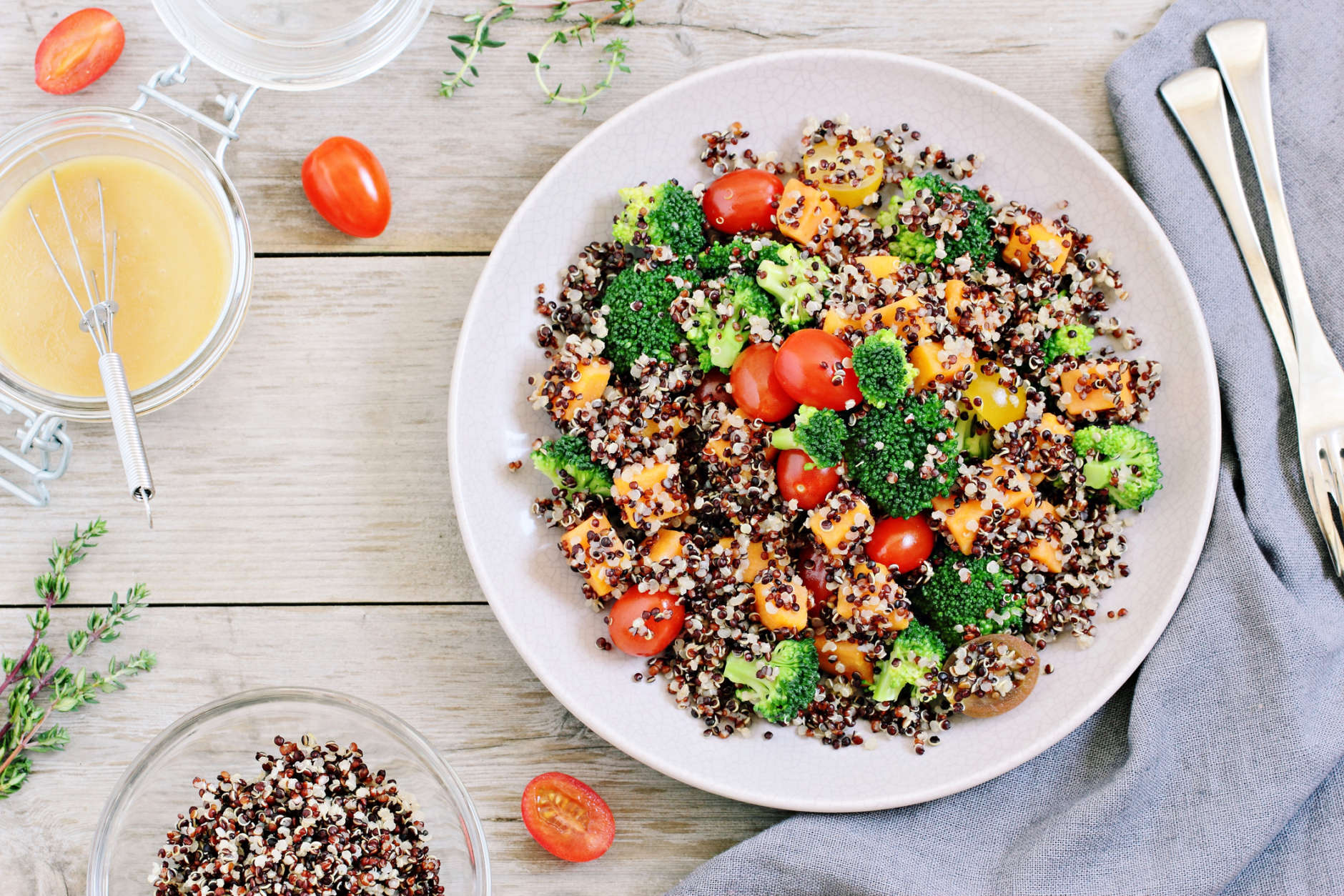

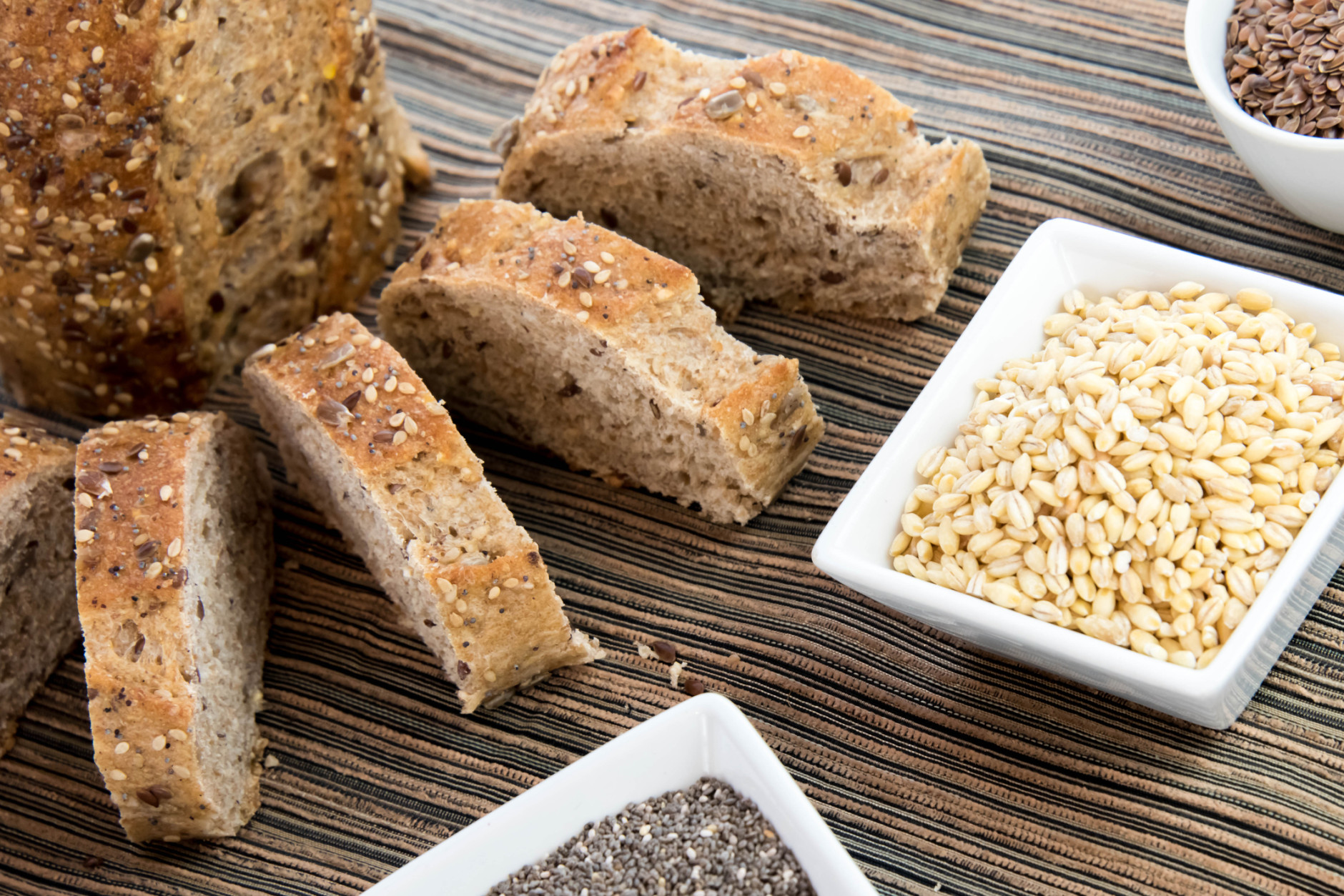
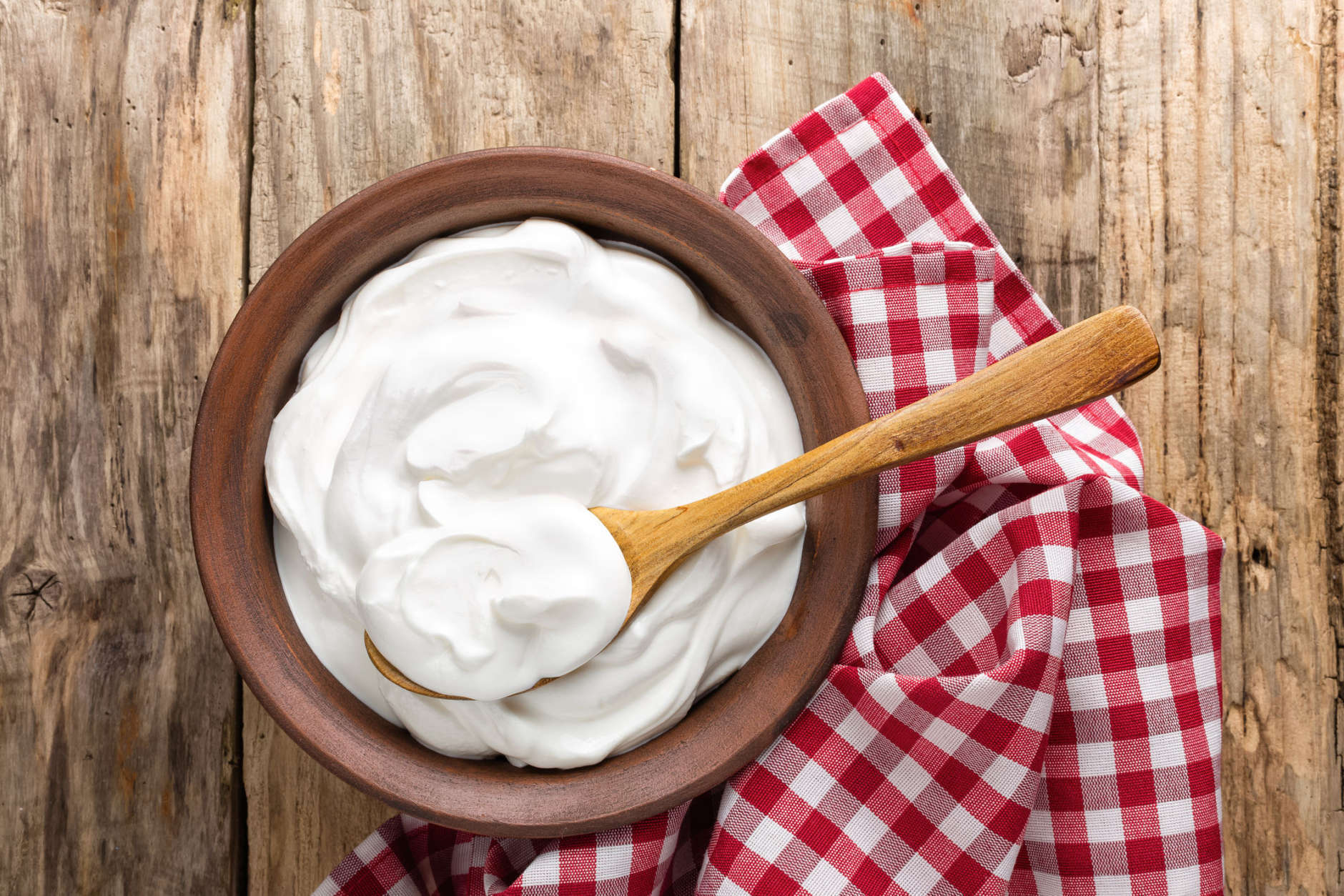


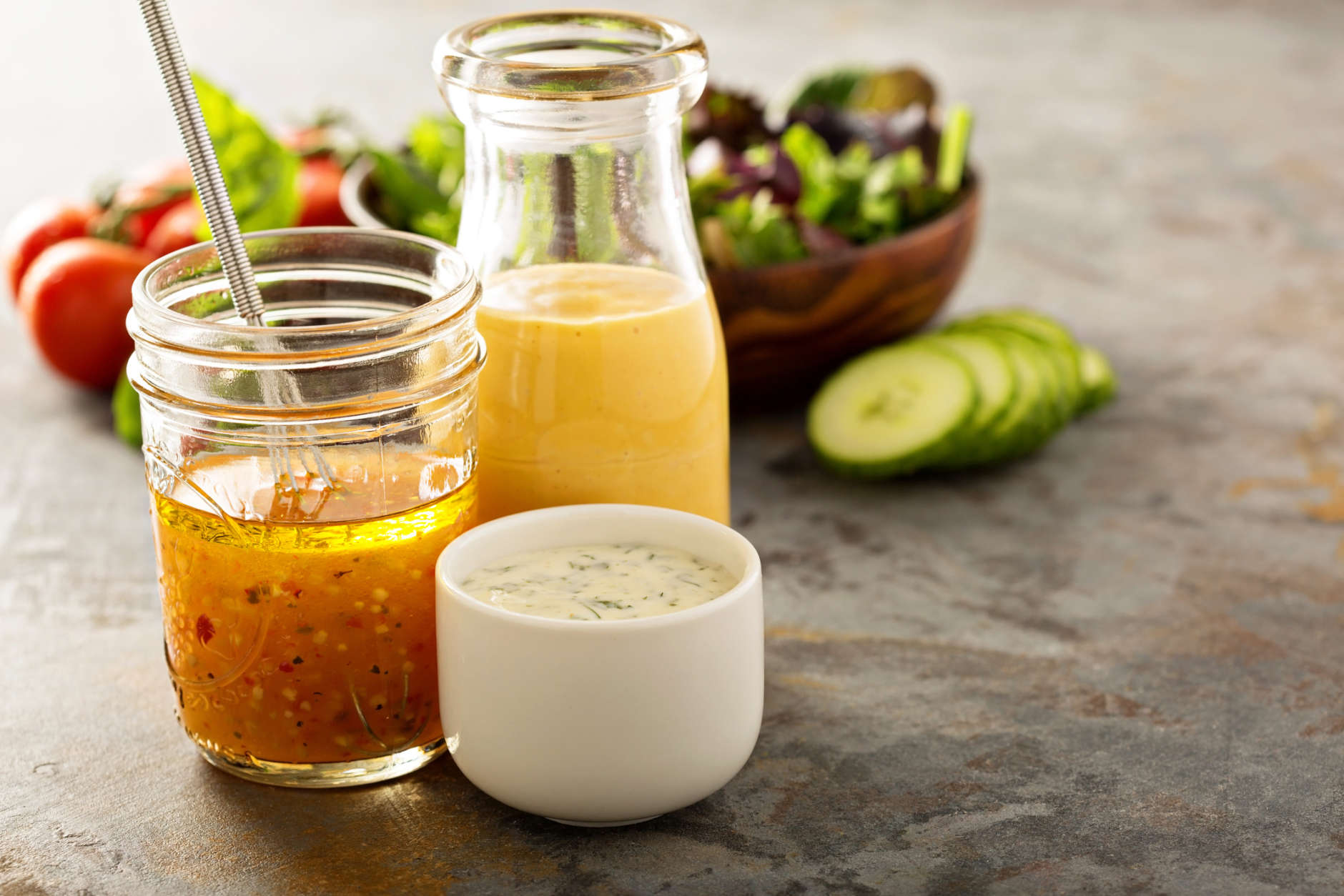

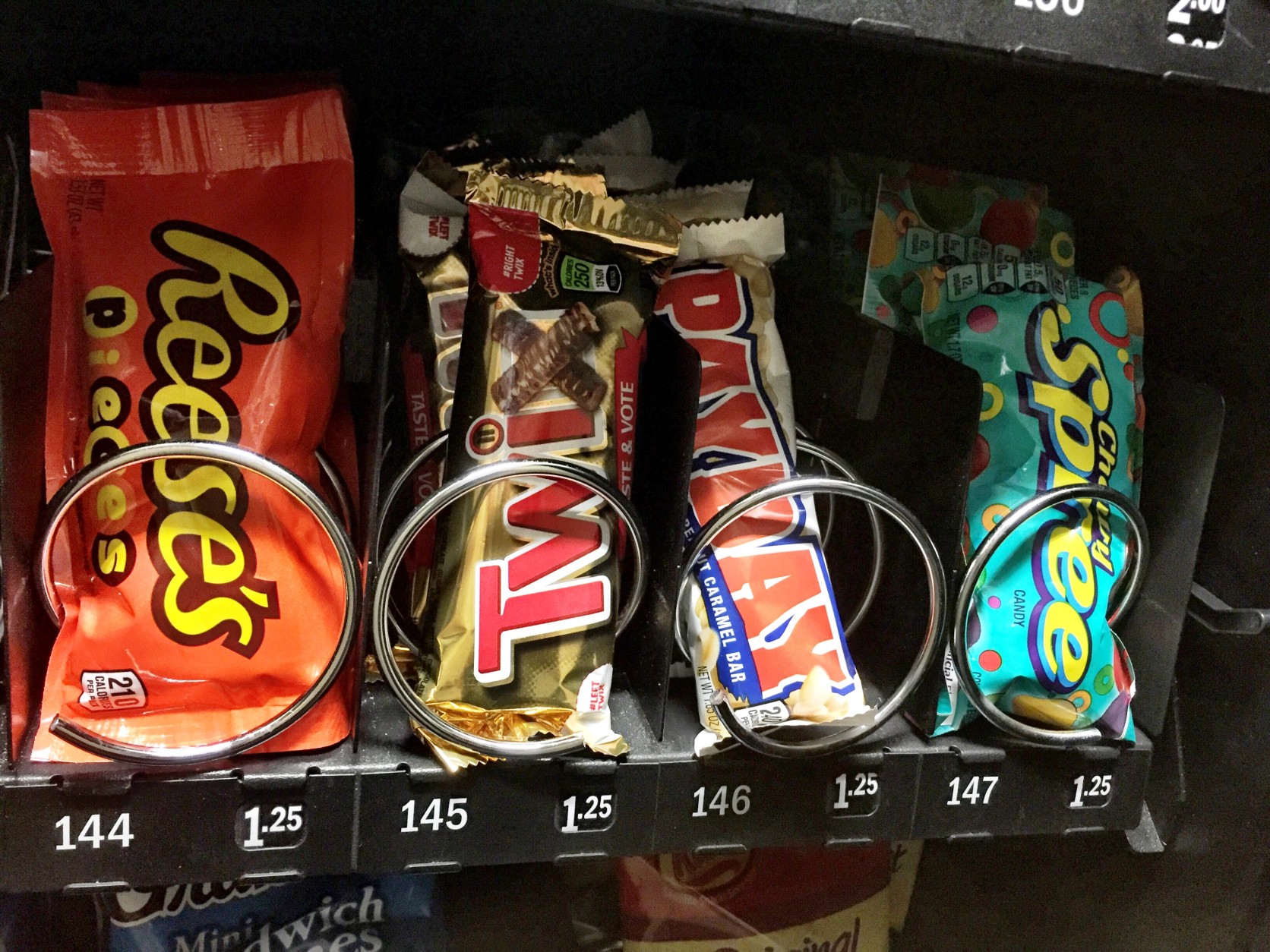



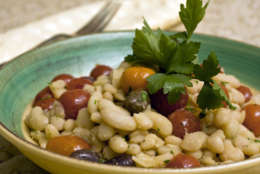
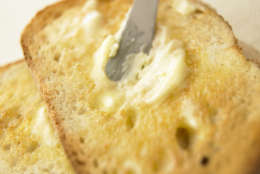
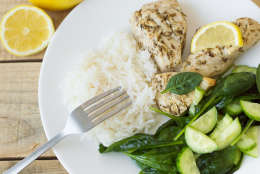
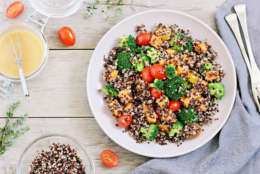

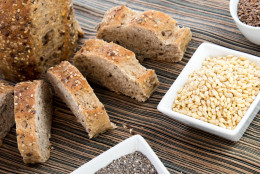
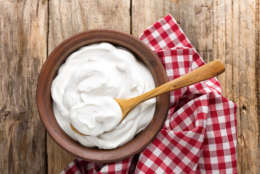


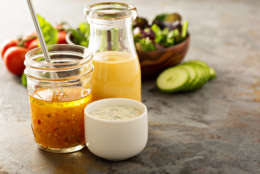




Healthy diet changes often accompany a number of “don’t eat’s” and “get rid of’s” in a new meal plan. And when it comes down to it, sticking to a new diet is hard, especially when the foods we’re cutting out are ones we love to eat. What if instead of focusing on what not to eat, we focus on what to eat? In this way, the unhealthier habits may get pushed out by the new, healthier ones. Rather than leaving a large gap in your diet by getting rid of certain foods, fill it with healthier substitutes that are similarly fulfilling. Recently, the American Heart Association offered new advice on replacing bad fats with good ones. In this article, we’ll explore this idea of replacing bad with good and expand into the broader diet and exercise.
[See: 7 Ways to Hack Your Grocery Trip for Weight Loss.]
Replacing Bad (Saturated) With Good (Unsaturated) Fats
Saturated fat causes the body to create low-density lipoprotein cholesterol, or LDL-C, which is commonly referred to as “bad” cholesterol — a leading cause of heart disease. The American Heart Association recommends that a maximum of 5 to 6 percent of daily calories come from saturated fat (generally from meat and dairy products). However, the average American consumes about 11 percent of his or her calories from saturated fat.
Studies show that merely reducing total fat consumption isn’t the best option for reducing heart disease risk, and a low-fat diet typically isn’t very enjoyable, either. Rather, maintaining the same level of overall fat intake but replacing saturated fat (from meat and dairy) with unsaturated fat (generally from plants) or whole-grain carbohydrates can significantly reduce heart disease risk by 30 to 40 percent, similar to the effect of being prescribed moderate strength statins. Like any attempt to replace bad habits with good ones, the biggest benefits come with sticking to the meal plan in the long term.
Unsaturated fats can be separated into two categories: monounsaturated and polyunsaturated. Examples of foods rich in monounsaturated fats include olive oil, sunflower oil, avocados and tree nuts. Foods with high amounts of polyunsaturated fats include a variety of seeds, such as chia seeds and sesame seeds, as well as walnuts.
The American Heart Association and National Lipid Association agree that coconut oil is not a suitable replacement for butter and cream. Despite the controversy surrounding the benefits of coconut oil, the numbers show that it contains high amounts of saturated fat, which has been shown to increase risk for heart disease. But no matter what you do, avoid trans unsaturated fats at all costs, since these have consistently been proved to raise LDL cholesterol. Look for the term “partially hydrogenated” in the ingredients label, which indicates that trans fat is present. Try to use high-quality extra virgin olive oil, since other types of olive oil can be diluted with other oils. But be careful — some olive oils have been falsely marketed as extra virgin. To check for legitimacy, look for dark bottles with the seal of the International Olive Council along with a harvest date.
In terms of dietary patterns, the Mediterranean diet is supported by scientific evidence to help prevent cardiovascular events such as heart attacks or strokes. In this diet, most of the fat intake comes from unsaturated fats. It replaces butter and cream with olive oil and meat with fish, and it includes whole grain bread, beans, fruits and vegetables.
Replacing Bad (Added) Sugar With Good (Natural) Sugar
Switching gears a bit, let’s turn our attention to sugar. Aside from satisfying our sweet tooth, sugar has been connected to weight gain, cavities and increased heart disease risk.
But don’t get discouraged: Not all sugars are created equal. One important distinction to make is between naturally occurring sugars and added sugars. Natural sugars (found in fruits) are accompanied by fiber, which fills you up and therefore prevents overeating. In addition, the body breaks down fruit in a way that allows the sugars to be absorbed into the body more slowly. In contrast, added sugar (such as table sugar or high-fructose corn syrup) is sugar without fiber and nutrients. It provides what are called “empty calories,” which means they add to your daily calorie count but contain no nutritional value. As a result, added sugars can lead to quick blood sugar spikes and weight gain. Research has shown that people who get over 25 percent of their daily calories from added sugar are twice as likely to die from heart disease as those who consume less than 10 percent from added sugar. In other words, the majority of your calories should come from foods with no added sugar.
It’s also worth clarifying some facts about sugar terminology. Ingredients such as “pure cane sugar,” “fruit juice concentrate,” agave nectar and honey are not natural sugars like those found in fresh fruits; in fact, they are far more similar to high-fructose corn syrup. Also, contrary to popular belief, fruit juice is not a good replacement for sugary sodas. These juices have many of the nutrients and the fiber filtered out, causing the sugar to be absorbed very quickly into the bloodstream. For example, a glass of orange juice can have as much as four oranges worth of sugar in it, an amount of fruit normally not eaten in one sitting.
In general, when looking for something sweet, stick to whole fruit.
Switching Out Salt for Spices
Sodium, the primary component of salt, is another ingredient that the American Heart Association advises against consuming in excess. The Mediterranean diet often uses herbs and spices such as basil, cumin, rosemary, sage and oregano to flavor dishes rather than adding salt or fat when cooking.
[See: 9 Simple Ways to Reduce Your Sodium Intake Now.]
Replacing Inactive With Active Time
The American Heart Association recommends a minimum of 30 minutes of moderate-intensity aerobic activity (e.g., a brisk walk) five days a week or 25 minutes of high-intensity activity (such as a jog or a run) three times a week. The association also suggests two days of muscle strengthening activity a week for additional heart-health benefits. It may seem daunting to add in exercise on top of an already busy schedule, but we’re here to help you with some practical recommendations for your day-to-day life.
One of the most effective substitutions can be replacing driving with walking. When driving to work, for instance, park a little farther away than you usually do and walk the last 15 minutes. Making this walk to work in the morning and back to your car in the evening will meet the 30 minute recommendation. Other great habits at work include taking the stairs instead of the elevator (even just a few flights of stairs counts!), using a treadmill desk, walking during your lunch break with co-workers or turning a sitting meeting into a walking meeting.
Outside of work, try to turn socializing into a chance to be active. Walking in the neighborhood, the park or even the mall is a great way to spend time with family and friends rather than going out to eat or watching a movie. However, if you do end up watching a movie at home, walk on a treadmill (if you have one) for the first 30 minutes of the film instead of sitting down. Or take it as an opportunity to do push-ups or sit-ups. Jumping jacks are another option.
Examples of Replacing Bad With Good
There are many heart-healthy substitutions you can make in your daily life without disappointing your taste buds. Click through the gallery above for ideas, or see the full list below.
| Instead of:
|
Replace with: |
| Saturated Fat to Unsaturated | null |
| Processed meat and red meat (e.g., ham, sausage, beef, pork)
|
Fish or chicken breast without skin
|
| Meat as protein on salad
|
Beans as protein on salad
|
| Whole milk
|
Skim milk, unsweetened almond milk
|
| Butter, cream, coconut oil, palm oil
|
Extra virgin olive oil, avocados in moderation
|
| Mayonnaise
|
Mashed avocado
|
| French fries
|
Tree nuts, baked vegetable fries (sweet potato, carrot, zucchini)
|
| Egg (with yolk)
|
Egg whites, egg substitute
|
| White rice
|
Brown rice, cauliflower rice, quinoa
|
| White bread
|
Whole grain bread
|
| Pasta
|
Zucchini pasta “zoodles”
|
| Sour cream
|
Greek yogurt
|
| Salt to Spice
|
null |
| Salt
|
Spices and herbs
|
| Chips and cheese dip
|
Vegetables and hummus
|
| Potato chips
|
Dried fruit and vegetable chips (apple, kale, sweet potato, beet)
|
| Processed salad dressing
|
Homemade dressing (olive oil and vinegar, or olive oil and lemon)
|
| Added Sugar to Natural Sugar | |
| Sugary desserts
|
Fresh fruit, frozen fruit bars
|
| Candy
|
Frozen grapes, frozen bananas
|
| Sweet tea
|
Unsweetened tea
|
| Soda
|
Water/sparkling water with lemon or other fruit
|
| Fruit juice
|
Fresh fruit
|
| Flavored yogurt
|
Plain Greek yogurt with fresh fruit
|
| Sedentary to Physical Activity | |
| Meeting in a conference room (sitting down)
|
Walking meeting
|
| Calling on the phone while sitting
|
Walk while you talk
|
| Taking a bus to work
|
Walking/biking to work
|
| Watching TV while on the couch
|
Walking on a treadmill/exercising while watching TV
|
| Driving to work
|
Driving part of the way, parking and walking the rest of the way
|
| Taking the elevator
|
Taking the stairs
|
| Getting coffee/food with friends
|
Walking in a park or the mall together
|
| Parking close to a store
|
Parking farther away and walking
|
| Working at a desk
|
Taking five minute breaks to get up and walk around, working at a treadmill desk
|
| Golfing using a cart
|
Walking the golf course
|
| Exploring a city by taxi
|
Exploring a city on foot or by bike
|
A Couple Other Notes
In addition to lowering heart disease risk, switching out bad habits with good ones can have other positive benefits. By eating a healthier diet and becoming more active, you may have more energy and generally feel better throughout the day. Since you may quickly notice these benefits, this could help cement the new good habits in place of the bad ones.
Also, we don’t want to forget to mention that the way you prepare your food matters. This is another area where you can think about replacing bad with good. For example, when you would typically fry a food, instead bake it. In other situations, boiling or steaming can be a great option.
[See: 10 Healthy Habits of the Naturally Thin.]
Summary
Here are the main points we’d like for you to remember:
— Replace saturated fats with unsaturated fats. Avoid trans fats at all costs.
— Use spices for seasoning instead of salt.
— Pick natural sugars (fresh fruit) over added sugars (high fructose corn syrup and table sugar). Try to avoid fruit juices.
— Find ways to be more active in your daily life at work (e.g., walk with co-workers at lunch) and at home (e.g., turn socializing into activity).
— Make changes that you can stick to!
More from U.S. News
The 38 Easiest Diets to Follow
U.S. News’ 38 Best Diets Overall
The 12 Best Heart-Healthy Diets
Replacing Bad Habits With Good Ones: Living Heart-Healthy and Happy originally appeared on usnews.com







